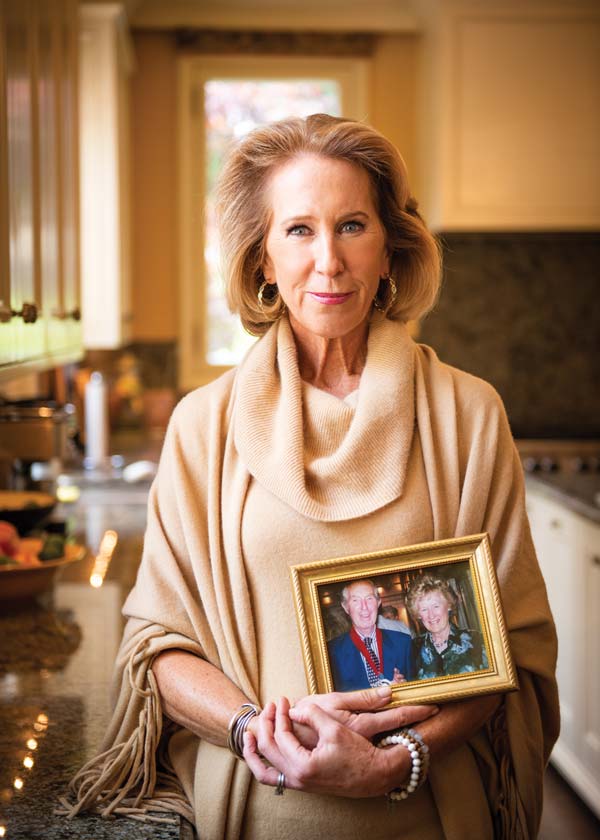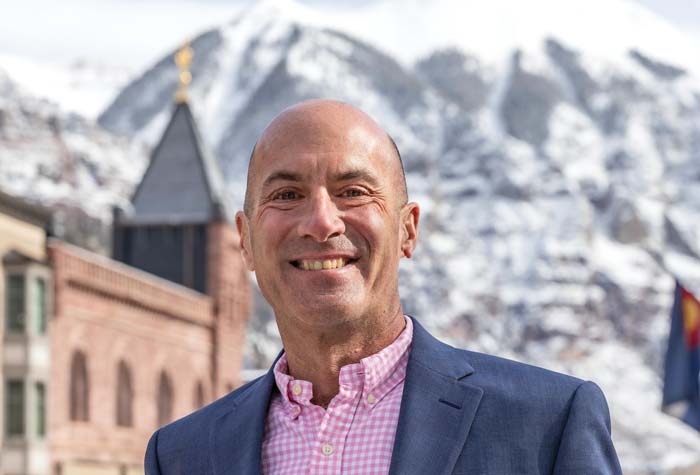Alzheimer’s disease, which affects 6.7 million Americans, is the sixth leading cause of death in the United States and the fifth leading cause of death among adults sixty-five or over. And yet it remains a disease that cannot be prevented or cured. BC Trustee Michaela “Mikey” Hoag ’86, P’14, who lost both of her parents to Alzheimer’s, has made it her mission to change that—and in the process has become one of the nation’s most successful and prominent fundraisers for the cause. She’s the force behind the Part the Cloud movement, which on behalf of the Alzheimer’s Association has raised $68 million for Alzheimer’s research, and she even managed to convince Bill Gates to write a (suitably massive) check. BC Magazine sat down with the award-winning Alzheimer’s fundraiser to learn more about her quest for a cure.
You were living in California with your husband, Jay, when your father was diagnosed with early-onset Alzheimer’s in 1994. What was it like when you first received the news?
It was devastating. I felt blindsided. I am one of six, and all of my siblings lived near my parents in New Jersey. Everyone was helping out physically and emotionally. I felt lost, and so I asked myself, “What is my role in all of this?” So, Jay and I decided we were going to invest in Alzheimer’s research. We contacted the Alzheimer’s Association and made a gift because when we started looking for answers, there was absolutely nothing. No drugs, no path forward. Nothing.
While you were dealing with your father’s illness, your mother was diagnosed with Alzheimer’s.
When my mom received her diagnosis in 2011, I decided I needed to go public. I needed to speak about this disease that no one wanted to talk about. I needed to let people know that it was okay to talk about it, because if we do not talk about it, we are never going to find a cure.
You grew up on a farm in New Jersey where you fed chickens and baled hay. That’s not the most obvious background for someone who’s playing a lead role in the fundraising for a cure to a deadly disease.
At BC, you are taught to roll up your sleeves, get involved, and try to make an impact. Alzheimer’s was not something I wanted to get involved with, but our Jesuit education taught us that when you need to jump in, you jump in. And for me, Alzheimer’s is something that just needs to be fixed, and I do believe that it is within our reach to do so.
To jump in, you launched the Part the Cloud Gala, on behalf of the Alzheimer’s Association, in 2012. What was your expectation for the inaugural event?
A friend of mine came to me and said, “There are so many of us who have been touched by Alzheimer’s disease. You need to do a fundraising event.” I told her, nobody is going to show up on a Saturday night for an event for Alzheimer’s. No one even wants to talk about it. Nonetheless, I pulled together a committee of people who I knew were affected by Alzheimer’s to plan a fundraiser. Up until two months before the event, I still was not sure it was going to happen. We did not have any money and we needed a singer, and no performers would associate themselves with Alzheimer’s because they felt that if they did, people would assume they had the disease. Then, through a friend, we got Tony Bennett to agree to perform pro bono. The event sold out immediately, and we raised $2 million out of the gate. It was beyond shocking, but it made me realize that there was a willingness to help fight this disease that none of us had imagined.


 print
print mail
mail




